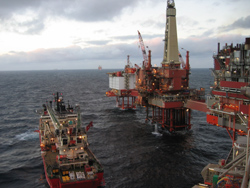Offshore oil and gas environmental risk management
Europe needs energy and the search for gas and oil continues until alternative renewable energy infrastructures have been established. This fact has resulted in an extension from current production sites towards the continental margins, deep water areas, and the Arctic. When working in such challenging and vulnerable environments, technologies and work practices must be continuously improved to guarantee a more sustainable energy supply. The TRENDS-2 project was part of a thematic network under the Fifth Framework Programme. It addressed health and safety, environmental and quality (HSEQ) issues with regard to hydrocarbon production. The project assessed the latest risk assessment tools by considering ERA technologies for operational and accidental discharges from offshore production. TRENDS-2 also highlighted limitations to the use of a risk quotient (PEC/PNEC) with regard to ERA, which is applied offshore. Risk assessment in the marine environment involves comparing an ecosystem's exposure to a particular chemical with the sensitivity of the ecosystem to this chemical. The exposure can be represented by the PEC (Predicted environmental concentration) The sensitivity can be expressed as the PNEC (Predicted no effect concentration). A comparison of the PEC and the PNEC, the PEC/PNEC ratio, has been used widely in aquatic risk assessment models. The TRENDS-2 project also assessed different modelling tools for accidental and operational discharges and made four main recommendations. These included the need for calibration between the different models used for risk assessment. The effects of offshore oil and gas production on the marine ecosystem need to be better understood in order to provide correct information for running ERA models. A more unified approach was required for accidental and operational risk assessments. It was also necessary to develop better models for forecasting risks, which take into account the random nature of the underlying processes and the factors which control them. Ideas resulting from TRENDS-2 are now being pursued through involvement in major initiatives concerning the development of environmental decision support systems. These are being undertaken through the IST programme of the European Union's Seventh Framework Programme (FP7) and through interaction with oil and gas industries and the industry body EUROGIF.







